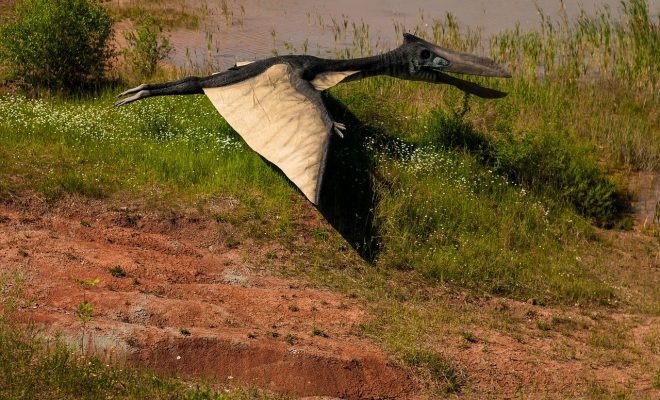Tennessee TommyKnockers

The first time I heard the term “Tommyknocker” was reading Stephen King’s TommyKnockers. The story was about a woman uncovering an alien spacecraft. As the ship was unburied, strange energy began to affect the people of the small town.
So, when I started researching Tennessee’s cryptids and came across the term “TommyKnockers.” My curiosity was piqued.
The story of the TommyKnocker is an old folktale from the British Isles. There are many variations of this tale. TommyKnockers are good spirits, or they are evil spirits. They are fairy folk with mischievous natures, or they are spirits.
Knackers or Bucca, in Cornwall, are similar to Brownies or Leprechauns. Wales calls them Bwca, but no matter their name. TommyKnockers protect miners. The creatures are no more than two feet tall, and they dress like miners.
You have to keep an eye on them. Great protectors they might be, but they will steal unattended food and tools as well. Yet when a cave-in is imminent, they save the miners by their knocking. In Cornwall, mining is dangerous. Miners have to deal with poisonous gases and unseen pools of water. As if these dangers were not enough, Miners needed to keep an eye out for collapses.
Anytime ore is pulled from the wall, it weakens the foundations. Mining too much ore causes the walls to collapse. The TommyKnockers knock on the walls, warning the miners of such collapses. Sounds of the earth or timber creaking alerted the miners to possible cave-ins. Such warnings give them the time to escape being buried under tons of rock. Such noises or creaking are the TommyKnockers.
The other version of this legend tells a much darker tale. TommyKnockers are not helpful spirits but evil entities. They attack the timber not to warn miners but to bury them. It is the sounds from their impending doom that saves them. Not the TommyKnockers.
The Cornish Miners believe in the benevolent version. Their knocking is to warn them of cave-ins. Yes, stories tell how the TommyKnockers like to play pranks. But, they are protective of the miner. They will appear in-person to a beloved miner to show them the way out of the mine. As a thank you, the miners will leave part of their meals out.
Stories abound that the TommyKnocker isn’t a brownie or leprechaun. That TommyKnockers are spirits of dead miners to protect them from their fate.
The Poldark mine, once known as the Wheal Roots mine, is considered Britain’s deepest mine. In Britain, witnesses report seeing swirling mists unseen until reviewing the photos. These images from the Wheal Roots Mine also show a brown-clad figure. He materializes once then vanishes. Is it a miner who fell victim to a cave-in?
Witnesses report hearing him in the tunnels. One brave paranormal team captured him cussing them out in a recording. I guess he didn’t like strangers.
In another version of this tale, TommyKnocker is a woman. A woman named Dorcas died and took to haunting a nearby mine.
Why? Witnesses didn’t know.
In her haunting, Dorcas fell in love with one of the local miners. The story went she followed him around the mines. Dorcas kept saying his name trying to get his attention. She said his name so often; he transferred to another mine, hoping to gain peace. Soon after he left, the ceiling collapsed.
Although not a true TommyKnocker, her actions did warn them.
A much older version of this myth is the time of Rome. Jewish people were enslaved and forced to work in Roman mines. It is their ghosts that haunt mines and warn others of impending doom.
I like this version, but would Jewish spirits follow Cornish miners to America?
Another version is TommyKnockers are spirits who aren’t bad enough to go to Hell. Nor are they good enough to go to heaven. So, they stay in limbo attached to earth as spirits. Again, I have a problem with this tale as well. Why would earthbound ghosts haunt mines? You would think that they would haunt the places they lived. If they needed to do good deeds to get to heaven? They would help their families then, not total strangers.
One final version I found tells of TommyKnockers informing of rich seams of ore. In other words, they knock to get your attention to let the miners know of mother lodes. The story tells how the knocking gets louder as you got closer to the massive tin lode.
A story tells how a man bought a house in Cornwall and heard knocking. No one could explain the knocking, and it got louder as the man approached. The knocking led the man to a massive tin lode buried under his house.
Cornish miners believe the TommyKnockers are helpful spirits. Spirits that were killed in mines and now warn living miners of impending doom. They believe these benevolent spirits take the form of these two-foot creatures like Brownies.
They believe in the Bucca or TommyKnockers strongly. They will not work at a mine unless they know the Bucca is there. The descendants of Cornish miners petitioned the owners of a California mine. It closed in 1956, and the miners wanted to free the TommyKnockers from the mine. To ensure, the TommyKnocker could go to another mine to protect other miners.
Interestingly, the owners agreed.
The TommyKnockers migrated with the Cornish Miners to Pennsylvania. They then migrated from Pennsylvania to the Appalachian mines.
Whether you believe in the TommyKnockers or not. Stories about them go back to ancient Rome. Tales of them exist in Britain, Wales, Cornwall, Ireland, and Germany.
Cornwall and England are called the Bucca Fairies. Germany calls them Kobolds, Berggeister, or Bergmannlein. The name means Mountain Ghosts or Little Miners. Ireland they are called Pooka’s, and the Welsh call them Bwca. They became TommyKnockers when the mischievous creatures migrated to America.
Many of the miners baked small Saffron cakes to leave as gifts to the TommyKnockers. Whether you believe in them or not? If you decide to explore any of the Tennessee mines.
I would bring some Saffron cakes to give the TommyKnockers. Just in case.










So interesting Verona. Reading your piece I wonder if my dad ever heard stories about Tommyknockers. His grandfather was from Cornwall and a miner.